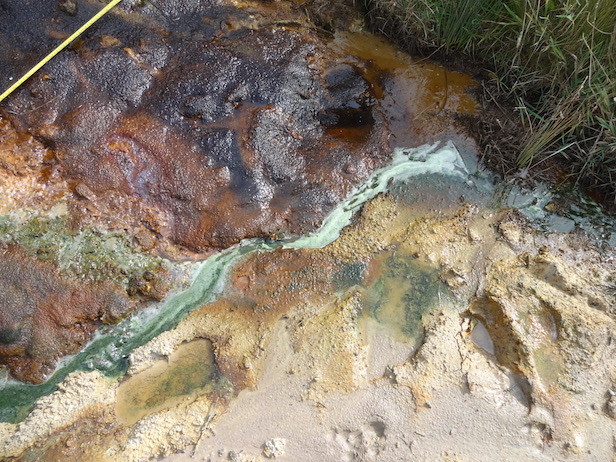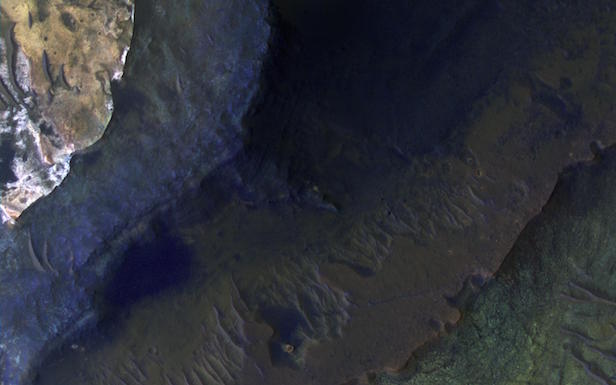Searching for signs of Martian life in the United Kingdom
A series of acidic streams in Dorset, United Kingdom, resemble Mars billions of years ago, which could help scientists find microbial life on Mars

Acidic stream in Dungy Head, Lulworth Cove, on the eastern end of St Oswald’s Bay, UK. Credit: Imperial College London.
Scientists of the Imperial College London have taken to the coast of Dorset, United Kingdom as a way of studying organic matter that we might find on Mars. This stream on the UK coast is teeming with organic matter that could have been around on Mars earlier on in its life, which could also help find traces of life on Mars.
Along Dorset’s acidic streams Imperial College London scientists have found traces of fatty acids, which are key building-block materials of biological cells. Due to the very intriguing similarity of the acidic streams in Dorset and on Mars, there could be hints for life that could have once been lingering on the Martian surface.
From what we’ve learnt about these streams, and applying it to the Red Planet, the scientists have claimed there could be nearly 12,000 Olympic-sized pools of organic matter left on Mars that could represent traces of ancient life. What we do know is that Dorset has many highly acidic sulphur streams that contain bacteria that thrive in these extreme conditions. A notable region is St Oswald’s Bay, as this environment almost perfectly mimics the environment of Mars billions of years ago.
Researchers took to the landscape as if they were on Mars itself and examined any matter preserved in rock deposits nearby. The iron-rich mineral called goethite transforms into another mineral called hematite, which is very common across Mars and is what gives the planet its red appearance. If these minerals were found to harbour traces of life on Earth, then there could be relatable clues for microbial life on Mars.

Capri Chasma, a portion of the Valles Marineris canyon system on Mars, contains hematite-rich deposits. Image credit: NASA/JPL-Caltech/Univ. of Arizona
After searching St Oswald’s Bay, researchers found goethite present as well as traces of their fossilised organic relics. Comparing the results from this study to how much rock is formed from acid environments on Mars – also assuming the concentration of fatty acids in Martian sediments is the same as Earth – means there is almost 30 billion kilograms (66 billion pounds) of fatty acids preserved within Martian rocks. This is what can fill up nearly 12 Olympic-sized pools.
When trying to find traces of life in previous missions, heat was used to inspect rocks for the presence of organic material. Scientists have claimed that heat instigates a reaction between the minerals and organic matter, and this would explain why no traces of life have been found yet. However, heating goethite or hematite doesn’t destroy any present organic matter, meaning that these minerals are ideal targets for such a study.
“Mars harboured water billions of years ago, meaning some form of life might have thrived there. If life existed before the water dried up, it would probably have left remains that are preserved to this day in Martian rock,” says Professor Mark Sephton, Head of Imperial’s Department of Earth Science and Engineering. “However, we have yet to find convincing traces of organic matter that would indicate previous life on the Red Planet.”
“St Oswald’s Bay is a present-day microcosm of middle-aged Mars. As the acid streams dry up – like during Mars’ ‘drying period’ – they leave goethite minerals behind which preserve fatty acids that act as biological signatures,” says Jonathan Tan, also of Imperial’s Department of Earth Science and Engineering.
Keep up to date with the latest reviews in All About Space – available every month for just £4.99. Alternatively you can subscribe here for a fraction of the price!




